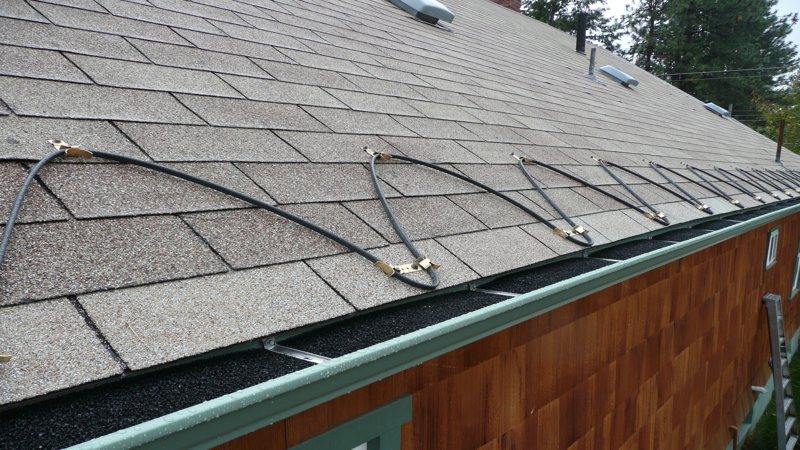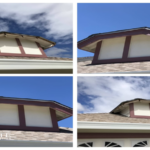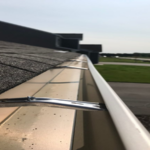As any homeowner knows, one of the most important parts of keeping your home in top condition is making sure your gutters are always in good working order. Not only do they protect your home from water damage, but they also keep leaves and other debris from clogging up your drains. That’s why it’s important to know how to properly install gutters, so you can be sure they’re always doing their job.
- The first step is to measure the length of your roofline. This will determine how much gutter material you’ll need to purchase.
- Next, you’ll need to cut the gutters to the correct length. Be sure to use a sharp blade to get a clean cut.
- Once the gutters are cut to size, it’s time to install the hangers. These will attach the gutters to your roofline.
- With the hangers in place, you can now start attaching the gutters to the hangers. Be sure to use the proper screws or nails so the gutters are securely in place.
- The last step is to install the downspouts. These will carry the water away from your gutters and down to the ground.
What is the rule of thumb for gutter installation?
There is no definitive answer to this question as there are many variables to consider when installing gutters, including the type of roof, the slope of the roof, the size of the building, the type of gutters, and the climate. However, a general rule of thumb is to install gutters so that they are level with the eaves of the roof. This will ensure that water is directed into the gutters and away from the foundation of the building.
What is the advice for gutters?
There are a few things to keep in mind when it comes to cleaning your gutters. First, always be sure to wear gloves when handling any kind of cleaning solution. Second, be sure to use a ladder that is stable and secure. Third, use a garden hose with a sprayer attachment to rinse the gutters clean. Finally, be sure to inspect the gutters regularly to ensure that they are free of debris.
What kind of screws to use for vinyl gutters?
The most common type of screw to use for vinyl gutters is a hex head screw. These screws are easy to find at most hardware stores and come in a variety of sizes. The important thing to remember when choosing screws for your vinyl gutters is to make sure that the screw is long enough to penetrate the gutter material and reach the underlying wood or metal support.
How far can you run a gutter without a downspout?
A gutter is a narrow, shallow channel that is installed along the edge of a roof to collect and direct rainwater away from the structure. Gutters are typically made of metal, plastic, or wood, and are available in a variety of sizes and shapes. Most homes have gutters installed on all sides of the roof, and most commercial buildings have gutters running along the perimeter of the roof.
The purpose of a gutter is to collect and carry rainwater away from the roof and foundation of a structure, to prevent water damage. Gutters are installed with a slight slope, so that water will flow by gravity towards the downspout. The size and shape of a gutter system is determined by the amount of rainfall the area receives, and the size of the roof.
A gutter system typically consists of gutters, downspouts, and drains. Gutters are the channels that collect the water, and are available in a variety of sizes and shapes. Downspouts are the pipes that carry the water from the gutters to the ground, and are typically made of metal or plastic. Drains are installed at the base of the downspouts to carry the water away from the foundation of the structure.
How far can you run a gutter with one downspout?
If you have a 20 foot long section of gutter, you can run the downspout 8 feet from the end of the gutter. This will give you 12 feet of gutter with the downspout in the middle. You can also run the downspout 4 feet from each end of the gutter. This will give you 16 feet of gutter with the downspout in the middle.
How much should a gutter drop every 10 feet?
- The slope of your roof: This is the angle at which your roofline slopes away from your home. You can measure this angle with a level and a tape measure.
- The length of your gutter: This is the measurement from the outer edge of your gutter to the downspout.
- The diameter of your downspout: This is the measurement of your downspout from top to bottom.
For example, if your roof has a slope of 6 inches per foot and your gutter is 10 feet long with a downspout diameter of 2 inches, your gutter should drop 3 inches every 10 feet.
How far apart should gutter clips be?
Gutter clips are an important part of any gutter system, and they come in a variety of sizes and styles to accommodate different types of gutters. Most gutter clips are made of plastic or metal, and they are designed to snap onto the front of the gutter to hold it in place. There are also gutter clips that screw into the gutter to provide a more secure hold.
The size of the gutter clip will depend on the size of the gutter, and the clips should be spaced evenly along the length of the gutter. For example, if you have a standard 5-inch gutter, you would use 5-inch gutter clips. The spacing of the gutter clips will also depend on the size of the gutter. Most gutters come with pre-drilled holes for the clips, so all you need to do is line up the clips with the holes and screw them in place.
If you are unsure about the size or spacing of the gutter clips, you can always consult with a professional gutter installer. They will be able to recommend the best size and spacing for your particular gutter system.
What is the fall rule for gutters?
The fall rule for gutters is that they should slope down and away from the house at least a quarter of an inch for every ten feet of run. This ensures that water will run off the roof and into the gutters, rather than pooling around the foundation of the house.
Final Word
As you can see, there is a lot that goes into installing gutters. But, if you take your time and do your research, you can surely do it yourself. Just remember, knowledge is power. And when it comes to gutter installation, that power can save you a lot of money.















